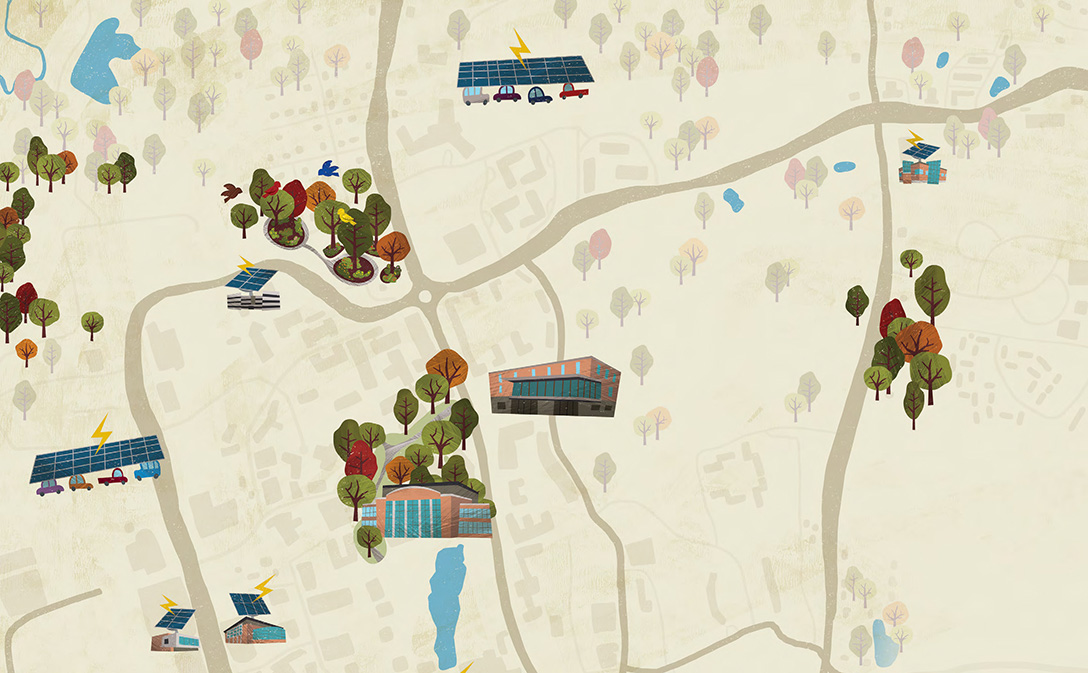The University of Massachusetts Amherst landscape today is a far cry from what it was when the Massachusetts Agricultural College opened in 1863. Back then it consisted of four wooden buildings on 310 rural acres, and the farm-boy students used fields, orchards, and pastures as laboratories.
Booming and Blooming
Over the last 156 years, there have been significant changes to the UMass campus—the Old Chapel was built in 1885, the campus pond was created in 1892, the first women’s dorm was built in 1920, and the Student Union was constructed in 1957, just to name a few. The last building boom in the 1960s and 1970s was the era that gave rise to a number of now-iconic brutalist-style buildings—the Southwest Residential Area, the W. E. B. Du Bois Library, and the Lederle Graduate Research Center—towering structures that appear to pierce the sky.
In recent years, UMass Amherst has undergone a dramatic physical transformation—renovations, facility improvements, and the addition of 35 new buildings that have changed how students learn and live, how professors teach and make new discoveries, how student athletes train and compete. The improvements have not gone unnoticed. The flagship campus is now the 24th best public research university in the nation. It is also a destination of choice for high-achieving students, and enjoys a rising tide of philanthropy.
As the needs of students and academic fields change, the campus adapts and expands. What started as a 310-acre campus has grown to a sprawling 1,463 acres. The campus, once just a cluster of four buildings, is now home to more than 170 buildings—and counting.
